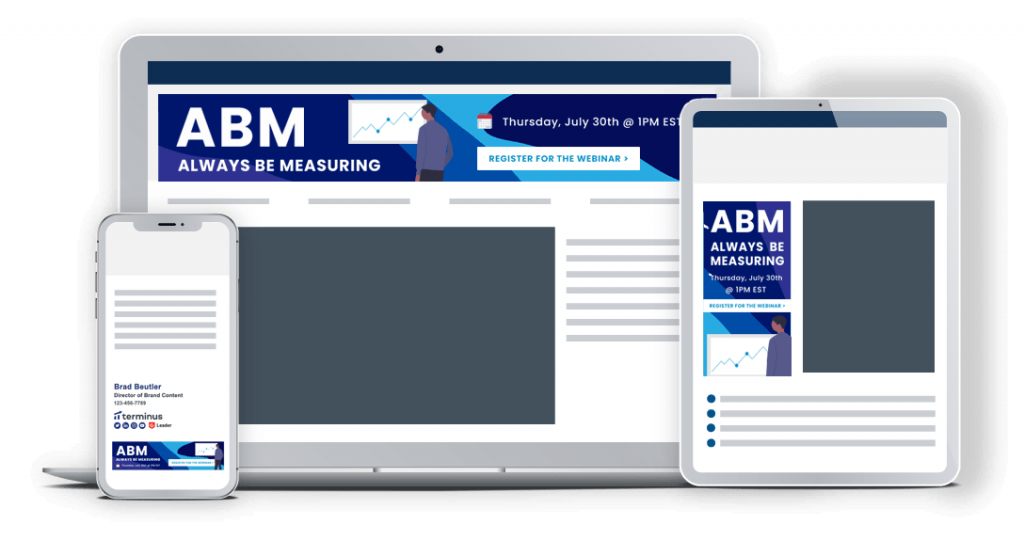Our experience as online consumers and targets of ads from birth means we’re all latent advertising experts to a certain degree, right?
You know what billboard caught your eye and why you’re now sitting at a greasy spoon off exit 72 eating world-famous banana nut pancakes. You know which ad stopped you in your mid-scroll tracks through Instagram and why you’re now the proud owner of a fabric fuzz remover. Better yet, you know why the ad on LinkedIn for a product to better your business made you click.
Was it the eye-catching design? The beautiful accompanying photos? The quote from a previous customer, ecstatic about their purchase? Or was it simple repetition of an ad that eventually convinced you that you did, indeed, need the lint shaver?
Turning the tables and applying that birthright knowledge to your org’s own digital advertising, though, might look and feel a little different. How can you rethink your approach to customers in thoughtful, conscious, and impactful ways?
To that end: Here are four things you probably already know about go-to-market digital advertising, but we’re going to share them anyway.
1. It’s More Than Lead Gen. It’s About Brand Awareness.
Yes, generating leads is never a bad thing, but it should never be your main or only goal. And if that’s your one gauge of success, you could potentially start wasting advertising dollars on the wrong accounts. Although these targets may need more than just one bold impression before they start engaging with your brand, keep at it with an efficient and targeted strategy.
Brand awareness is vital mainstay for your prospect, no matter where they fall in your sales funnel. And if you’re not highly recognizable or the first brand that comes to mind when they think of a company that can meet their needs, they’ll no doubt have plenty of other options.
So what does this mean for you? Be top-of-mind. Invest in a clear, consistent, and strong brand. Be omnipresent. Appear in multiple channels, at multiple times. Spend time where they are: Their inbox, social media, and…everywhere else online.

2. Know Your Target, Know What to Say to Them, and What to Give Them.
A smaller, highly engaged target audience is better than blasting a firehose of advertising at a wide swath of mildly interested clickers—not to mention, a better use of your time.
Once you’ve curated your audience, actually talk to them. This means offering a highly personalized, tailored, and authentic experience. No, it’s not just throwing their name in an email subject line and calling it good. Use terms they’re familiar with, learn what their specific needs are, and then offer them the greatest solution they can find.
Is that solution a demo? A webinar or other virtual event? A piece of content? Delivering a real, actionable item will give them a reason to keep clicking.
The best performing digital ads typically include:
- Compelling header
- Sub header that’s easy to understand
- Clear call-to-action (CTA), oftentimes in the form of a “button”
- Imagery (graphics, icons, or photography)
- The advertiser’s logo
3. Make Sure You’re Measuring the Right Thing to Determine ROI.
We’ve been alluding to this the entire blog post (okay, more than alluding…), but it’s time to truly underscore the value of reaching the right targeted customers, and using the right metrics once you’re there.
Cost-per-click optimization used to be the big KPI, with good reason, and it’s still an important start. But with its limitations as far as data-mining goes, the value in some of those clicks might be emptier than you think.
And that’s why it’s even more important to track your match-rate optimization as you hone in on the specific interest points of your audience.
What’s Match-Rate optimization?
A match rate is the percentage of users from an audience segment that an ABM platform is able to recognize. It’s important to pay attention to the average match rate each platform offers, as some only offer down to 55%. The average target account match rate for Terminus is 80%.
Even More Important – Engaged Accounts.
It’s most important to measure the number of accounts in a given target account list that are clicking your ads, visiting your website, opening your emails, or showing any other digital interaction with your brand.
4. Keep It Fresh.
The only constant is change, yadda yadda yadda, adages. But that cliche means something different when you’re attempting to attract a potential customer from the billions of pixels of noise they encounter daily.
So don’t view your ad strategy as a set-it-and-forget-it one, because the only thing that’ll be forgotten is your ad—and you. Your ads are living and should grow and change with your prospects. Need some ideas for inspiration? Start by checking out the Terminus September Issue.
Watch results, and pivot (yeah, we said it) quickly when something isn’t working. Be experimental and try new things that you might not have in the past: Humbly demonstrate what you have to offer that competitors don’t. Direct them straight to pricing. Offer a discount. Offer a free trial—because nothing says “we’re so confident in what we do, we want you to test it out before you buy it” quite like a free trial. Ask for feedback or reviews to keep users engaged. Show off your success stories with meaningful customer quotes.
When you put yourself in the shoes of your prospects, you’re able to better pinpoint what works and why. And if you can’t, don’t worry: There’s plenty of data to back it up.